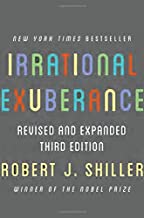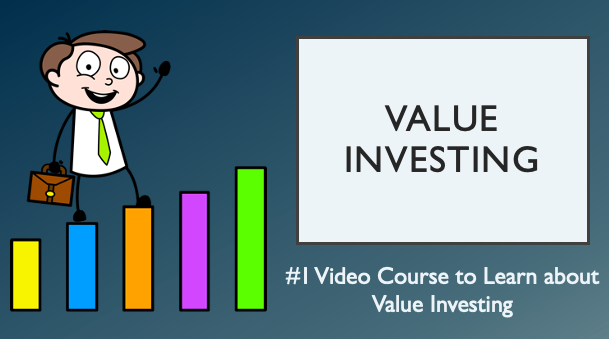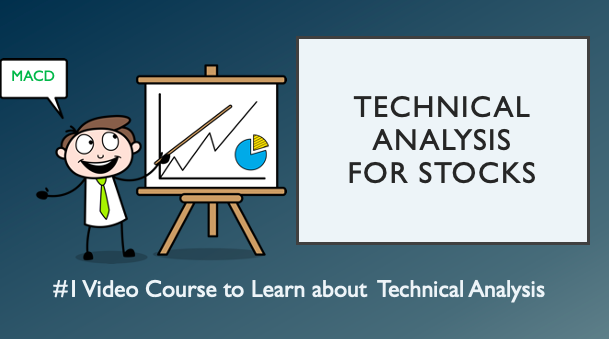Book Summary of Irrational Exuberance
by Robert J. Shiller

What is this book about?
"Irrational Exuberance" by Robert J. Shiller is a comprehensive analysis of speculative bubbles in financial markets, focusing on the psychological, cultural, and structural factors that drive market volatility and investor behavior. The book covers historical perspectives on the stock, bond, and real estate markets, exploring how irrational exuberance—overconfidence and speculative behavior driven by social and psychological factors—leads to market bubbles. Shiller examines the factors that contribute to these bubbles, such as media influence, new economic thinking, and psychological biases, and calls for policies to mitigate the adverse effects of market volatility.
Who should read the book?
The book is ideal for:
- Investors and Financial Professionals: Those looking to understand market dynamics and avoid the pitfalls of speculative bubbles.
- Economists and Academics: Scholars interested in behavioral finance, economic psychology, and market history.
- Policymakers and Regulators: Individuals involved in crafting financial regulations and economic policies to stabilize markets.
- General Readers: Anyone interested in understanding the causes and consequences of financial market booms and busts.
10 Big Ideas from the Book
- Speculative Bubbles: The book defines and explores the concept of speculative bubbles, where asset prices rise rapidly due to investor enthusiasm, often disconnected from fundamental value.
- Psychological Factors: Shiller emphasizes the role of psychological factors, such as herd behavior and overconfidence, in driving market bubbles.
- Cultural Influences: Media and cultural narratives play a crucial role in shaping investor sentiment and market dynamics.
- Historical Perspective: The book provides a historical analysis of past market bubbles, including the stock market crash of 1929 and the dot-com bubble of the late 1990s.
- Market Volatility: Shiller discusses the volatility inherent in free markets and the challenges of predicting market movements.
- Efficient Market Hypothesis: The book critiques the efficient market hypothesis, arguing that markets are not always rational and can be influenced by irrational behavior.
- New Era Thinking: Shiller explores how "new era" narratives, such as the belief in the infallibility of tech stocks in the 1990s, contribute to market bubbles.
- Policy Recommendations: The book advocates for regulatory and policy measures to curb speculative excesses and protect investors.
- Behavioral Finance: Shiller incorporates insights from behavioral finance to explain why traditional economic models fail to account for market bubbles.
- Social Epidemics: The book draws parallels between speculative bubbles and social epidemics, where ideas and behaviors spread rapidly and unpredictably.
Summary of "Irrational Exuberance" by Robert J. Shiller
"Irrational Exuberance" by Robert J. Shiller is a comprehensive examination of speculative bubbles in financial markets, combining insights from economics, psychology, and history to explore why and how these bubbles form. The book is divided into five parts, each focusing on different aspects of market behavior and providing key insights into the causes and consequences of irrational market exuberance.
Part One: Structural Factors
Shiller begins by placing market behavior in a historical context, analyzing long-term trends in the stock, bond, and real estate markets.
-
Stock Market (CAPE Ratio):
- The Cyclically Adjusted Price-Earnings (CAPE) Ratio is introduced as a critical tool for assessing market valuation. The CAPE ratio divides the real (inflation-adjusted) S&P Composite Index by the ten-year moving average of real earnings.
- Key Value: The CAPE ratio peaked at 47.2 in March 2000, signaling a significant overvaluation in the stock market, far exceeding the previous peak of 32.6 in 1929.
-
Bond Market:
- Shiller discusses the relationship between bond yields and inflation, emphasizing the importance of real (inflation-adjusted) interest rates. During periods of high CAPE ratios, bond yields were low, reflecting investor complacency and an underestimation of risks.
-
Real Estate Market (Price-to-Rent and Price-to-Income Ratios):
- The Price-to-Rent and Price-to-Income Ratios are highlighted as key indicators of housing market valuation.
- Key Insight: During the housing boom of the 2000s, these ratios reached unsustainable levels, with home prices in some markets reaching 10 times buyers' per capita income, signaling a housing bubble.
Part Two: Cultural Factors
Shiller explores the cultural and societal influences that amplify speculative bubbles, focusing on how media, new economic thinking, and global trends shape investor behavior.
-
Precipitating Events:
- Technological innovations, such as the internet boom, and the global spread of capitalism are identified as key factors that can trigger speculative bubbles.
-
Amplification Mechanisms:
- Psychological factors like herd behavior and naturally occurring Ponzi processes are crucial in turning initial price increases into full-blown speculative bubbles.
- Valuation Confidence Index: A low valuation confidence index during a bubble suggests that while prices are high, investors are not confident in the market's valuation.
-
Role of Media:
- The media plays a significant role in amplifying market bubbles by focusing on success stories and creating feedback loops that drive further price increases.
-
New Era Thinking:
- Shiller examines the dangerous belief in "new era" theories, where investors rationalize high prices by arguing that traditional valuation metrics no longer apply.
-
Global Perspective:
- Shiller illustrates that speculative bubbles are a global phenomenon, with examples from various countries showing that bubbles can occur anywhere.
Part Three: Psychological Factors
This section delves into the psychological aspects that drive market behavior during bubbles.
-
Anchoring Bias:
- Investors often anchor their expectations to past market highs, leading to overvaluation and a reluctance to adjust to new market realities.
-
Herd Behavior and Social Contagion:
- Speculative bubbles can be understood as social epidemics, where investment behaviors spread rapidly through a population, driven by herd mentality and social networks.
- P/E Ratio Multiplication: During bubbles, P/E ratios can become excessively inflated due to herd behavior, as seen during the dot-com bubble when technology stocks' P/E ratios soared far beyond historical norms.
Part Four: Attempts to Rationalize Exuberance
Shiller critiques the rationalizations used to justify high asset prices during speculative bubbles.
-
Efficient Market Hypothesis (EMH):
- Shiller challenges EMH by showing that markets are not always rational, as evidenced by the existence of speculative bubbles.
- CAPE Ratio as a Predictor: The CAPE ratio has been a reliable predictor of long-term market returns, with high CAPE ratios often followed by lower returns over the next decade.
-
Investor Learning and Unlearning:
- Shiller argues that during bubbles, investors often "unlearn" rational analysis and become overconfident, leading to irrational market behavior.
- Feedback Loops: Positive feedback loops sustain bubbles, as rising prices lead to increased investor confidence and further price increases.
Part Five: A Call to Action
The final part of the book focuses on the implications of speculative bubbles and provides recommendations for managing the risks associated with them.
-
Speculative Volatility:
- Market bubbles contribute to significant volatility, which can lead to economic recessions and widespread financial instability.
- 2007-2009 Financial Crisis: Shiller uses the crisis as an example of the destructive power of speculative bubbles.
-
Policy Recommendations:
- Improved Regulation: Strengthening financial regulations to prevent excessive risk-taking and increase market transparency.
- Macroprudential Policies: Implementing systemic risk management tools, such as counter-cyclical capital buffers.
- Investor Education: Enhancing financial literacy to reduce the likelihood of irrational investment behavior.
-
Behavioral Insights:
- Understanding the behavioral factors that drive market bubbles is essential for developing effective strategies to prevent them.
Key Ratios and Their Values
-
Cyclically Adjusted Price-Earnings (CAPE) Ratio:
- Key Value: Peaked at 47.2 in March 2000.
- Historical Peak: 32.6 in 1929.
-
Price-to-Rent Ratio:
- Significantly inflated during the 2000s housing boom, signaling a bubble.
-
Price-to-Income Ratio:
- In some markets, home prices reached 10 times buyers' per capita income during the housing bubble.
-
Valuation Confidence Index:
- Low during bubbles, indicating investor uncertainty about market valuations.
-
P/E Ratio Multiplication:
- Dramatically increased during speculative bubbles, particularly in technology stocks during the dot-com bubble.
Key Insights
- Market Bubbles Are Recurrent: Speculative bubbles are a recurring phenomenon driven by a combination of structural, cultural, and psychological factors.
- CAPE Ratio as a Predictive Tool: The CAPE ratio is a critical metric for assessing market valuation and predicting long-term returns.
- Role of Media and Herd Behavior: Media amplification and herd behavior play significant roles in driving and sustaining speculative bubbles.
- Need for Proactive Measures: Improved regulation, macroprudential policies, and investor education are essential to mitigate the risks associated with market bubbles.
- Behavioral Economics: Understanding the psychological factors behind market behavior is crucial for developing effective strategies to manage financial markets.
This summary of "Irrational Exuberance" provides a comprehensive overview of Shiller's analysis of speculative bubbles, emphasizing the importance of recognizing and addressing the factors that contribute to irrational market behavior.
Which other books are used as references?
Robert Shiller references a wide range of books and academic papers throughout "Irrational Exuberance." Some of the referenced works include:
- "Security Analysis" by Benjamin Graham and David Dodd: A foundational text in value investing, referenced in discussions of market valuation.
- "Animal Spirits" by George Akerlof and Robert Shiller: Co-authored by Shiller, this book explores the role of human psychology in economic decision-making.
- "The Great Crash 1929" by John Kenneth Galbraith: A historical account of the stock market crash of 1929, used to draw parallels with more recent bubbles.
- "Extraordinary Popular Delusions and the Madness of Crowds" by Charles Mackay: A classic study of crowd psychology and speculative manias, referenced in discussions of historical market bubbles.
Browse Summaries of Top Investing books!
You may also like the below Video Courses



